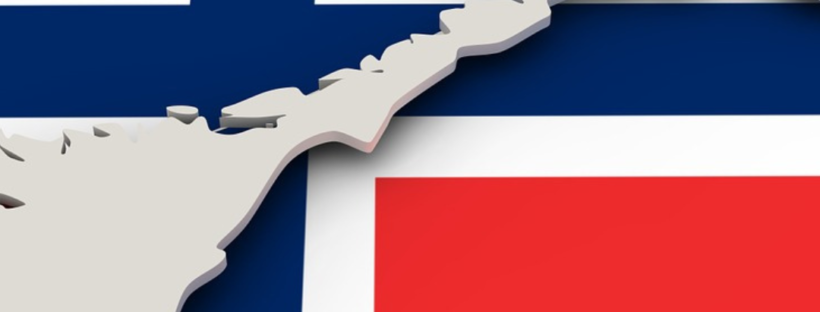I. Introduction
Norway’s Pension Fund Global (NPG) is the largest sovereign wealth fund in the world, with assets worth over $1 trillion. The fund was established in 1990 to provide a sustainable source of income for future generations of Norwegians. The fund’s size and investment strategy have made it a major player in the global financial markets, and its success has significant implications for the Norwegian economy. This case study examines the history and current investment strategy of the fund and discusses the challenges and opportunities it faces in the future. Continue reading
Tag: Case study
Case Study – The Future of Malls: Was Decline Inevitable?
I. Introduction
The retail industry has undergone significant changes in recent years, particularly with the rise of e-commerce and the decline of traditional brick-and-mortar stores. Malls, once a symbol of American consumerism, have also experienced a decline in popularity and profitability. This case study explores the history of malls, the factors contributing to their decline, and the adaptations that malls have made in order to remain relevant. Additionally, this case study examines the challenges and opportunities for the future of malls. Continue reading
Case Study – Glory, Glory Man United!
Introduction: Football is one of the most popular sports in the world. With a huge following and a global appeal, football has become a multi-billion dollar industry. The English Premier League is one of the most popular football leagues in the world, attracting fans from all over the globe. Manchester United, also known as the Red Devils, is one of the most successful clubs in the English Premier League. This case study explores the success of Manchester United and how it became one of the most valuable football clubs in the world. Continue reading
A Case Study in the Telecom Industry
Introduction
Alcatel-Lucent Atrium Wireless Call Server is the company that deals with various sites as a team in different time zones. The company creates the best team and identify the problems or issues arise in the process and find out the solution based on different business strategy. Also, they used various techniques to minimize problems.
Business situation
With different sites and time zone, the complexities arise in the business due to which many projects that outsourced are failed. In two-site projects also companies are struggling and facing problems (Stroube et al. 2019). Many companies show the negative review by giving up the project and express their view that the projects which are based on various sites and time zones are not able to get completed. Besides, it is also add on that the project circulates over five sites in five different countries having a different time zone and also different culture brings complexity.
Problems and solutions
Five different cultures to manage the teams in five different time zones are considered as the biggest challenge. The local interest is first taken care by the individual sites due to this the politics arise between the inter-site. The major challenge is the difference in the culture. The dependency in cross-site is increased due to the communication links in the inter-site is multiplied with each new site (Visan, Ionita & Filip, 2020). Besides, between the office and home life the dim lines formed because of the overlap requirements with other sites in the environment of the multiple time zones. Due to the requirement of the particular skills the challenges arise in the team between India and China. Keep the learning curve of the new team members are small and keep the low abrasion is also a challenge. The solution for these problems is to keep an expert in every team and apply the right strategy with accurate execution and a positive attitude.
Complexity factor
The main complexity element is to manage the five different sites of different countries with different time zone and cultures and with that to maintain the cost of the company (Stroube et al. 2019). To minimize this issue management team identifies a strategy to achieve the key objective of the business. The main objectives of the company are to keep the overall cost low and to that, they create a structure for a unique and futuristic team and their job is at countries that have high-cost to keep the main functions in it and at low-cost countries the rest of the functions shifted. In India the development and testing teams are build-up by the help of the architecture team, and vendor and front-end team of the USA so that the cost can be controlled. Besides, to meet the resource pool of Leverage Alcatel’s worldwide the extra sites are added in China, France and Russia and this is one of the key objectives of the company. The project management team works closely with the other team like the development and testing team to control the cost.
The technology used to minimize the risk, problems, and complexity The various technology is used in different sectors of the company and they are: To grow the team in different countries the company hires the new graduates and brings with the existing members who has an experience in WCS (Rizomyliotis et al. 2020). The project manager also organizes the various training to train the members and visit all the sites to maintain the day to day activities. Besides, there are different countries involve in the business and on a daily basis they exchange emails in different languages which create an issue so instead of that they use messenger, Net meeting, and collaboration sites to improve communication. The online resource assignment system is used by the company to manage the different sites according to their time zone. The management plays an important role in reducing the team issues, infrastructure problem and reduce the culture differences (Asamoah et al. 2019). The leader helps to reduce all the risks by creating an interactive session with team. Use advance technology to improve infrastructure. Besides, to reduce the cultural differences the company communicate with their clients and use the technology so that the communication gap will not arise.
Conclusion
Based on the above study it can be concluded that the company can solve a problems and run the business with a profit if the management is handled properly. Also, the company’s various problems are identified like culture and time zone differences and find solutions. Besides, company use various techniques which helps the company to maintain the cost and help in solving the problems.
References
Asamoah, D. A., Sharda, R., Kalgotra, P., & Ott, M. (2019). Who Renews? Who Leaves?
Identifying Customer Churn in a Telecom Company Using Big Data Techniques. Journal of Information Systems Education, 27(4), 2.
Rizomyliotis, I., Poulis, A., Apostolos, G., Konstantoulaki, K., & Kostopoulos, I. (2020).
Applying fcm to predict the behaviour of loyal customers in the mobile telecommunications industry. Journal of Strategic Marketing, 28(1), 1-15.
Stroube, B., KM, K., Narayana, C. N., & Murthy, M. (2019). Reinventing “Value” For Business
Endurance–A Case Study Of Indian Telecom Market. Executive Editor.
Visan, M., Ionita, A., & Filip, F. G. (2020). Data Analysis in Setting Action Plans of Telecom Operators. In Data Science: New Issues, Challenges and Applications (pp. 97-110).
Springer, Cham.



